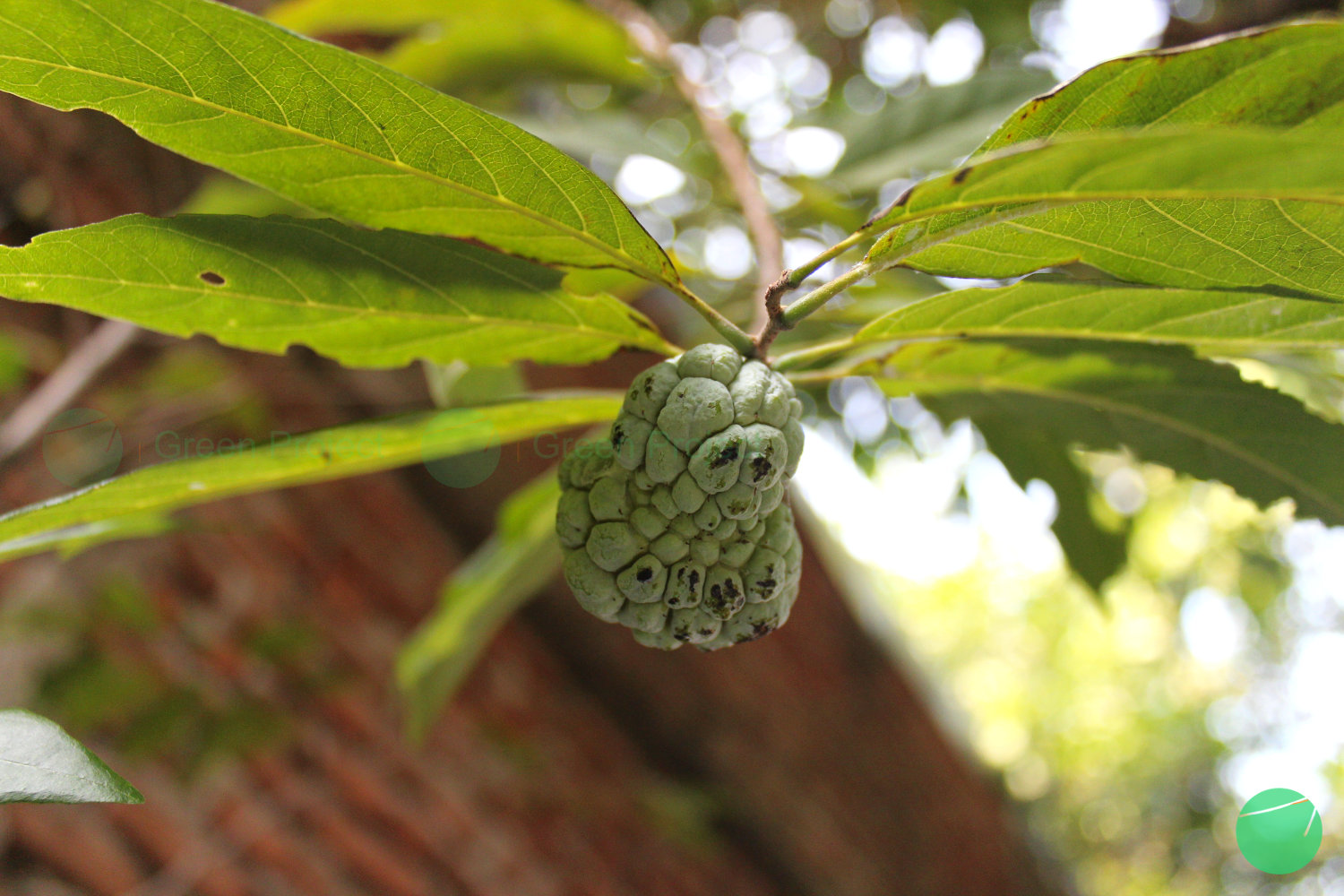Naming Identity
Srikaya is scientifically known in Latin as Annona squamosa. The species name of sugar apple 'squamosa' refers to the fruit's protruding appearance. Internationally it is known as sugar apple or sweetsop. In Malaysia, this plant is known as nona fruit or sri kaya, lanang in Thailand, atis in the Philippines, amritaphala or aatoa in India and anona blanca in Spanish-speaking countries.
Taxonomy
Kingdom | Plantae |
Phylum | Tracheophyta |
Class | Magnoliopsida |
Order | Magnoliales |
Family | Annonaceae |
Genus | Annona |
Species | Annona squamosa |
Origin
Srikaya or sweet sop is believed to originate from South America, especially the Caribbean region, which was then distributed to many other countries in South America, North America and Asia, including Indonesia.
Shape Description
This plant is Included in the evergreen plants, sweet sop can grow up to 4 to 6 meters tall. The main characteristic of this tree is its yellowish-green fruit that resembles short pine cones. Sweet is attacked by a number of pests that eat the roots, stems, leaves, and fruit as well as fungi on the dry and rotten fruit.

The leaves are hairy green when young with a thin, oval-shaped egg and are pointed at the tip. The leaves are about 6 to 10 cm long.
The flowers are small, about 2.54 cm long, produced singly or in groups of 2 to 4 from the leaf axils on shoots when they are one year old or on new growth. The flowers consist of 3 fleshy green petals, 3 small inconspicuous sepals, and numerous pistils on the same receptacle.
Sweet Sop Variety
Three forms of sweet sop are found in the Philippines, namely the seedless form with green fruit which grows in most parts of the Philippines, the seedless form with purple fruit which was reportedly introduced from India, and the seedless green fruited form of unknown origin.
The other varieties according to Harley (2023) are;
- Na Dai Vietnam – A sweet and chewy Vietnamese variety of sweet sop
- Thai Lessard – A green sweet sop variety from Thailand that is famous for its large, sweet sweet sops
- Kampong Mauve – A purple sweet sop variety that develops beautiful purple and red cheek hues and is said to have a sweet taste
- Thai Purple – A purple sweet sop variety that develops a purple blush and is very productive
- Thai Golden – A yellow rather than green variety of sweet sop from Thailand. This variety of sweet sop is sweet and chewy and has a unique yellow or golden appearance
How to Plant Sweet Sop
In general, sweet sop trees should be planted in full sunlight for growth to produce the best fruit production. Sweet sop adapts well to most types of well-drained soil, including sand and limestone-based soils. Trees in dirty, heavily fertilized soil tend to grow stronger but produce less fruit due to the high native nitrogen content. Sweet sop trees are intolerant of soil that is constantly wet or waterlogged (H. Crane et al.).
Sweet sop is often cultivated from seeds but can also be cultivated by grafting it on the lower part of the stem. The skin color will change from grayish green to greenish yellow as the fruit approaches maturity. Harvested fruit should be handled carefully to prevent bruising of the skin. Harvesting immature fruit will result in poor quality and failure to ripen with mature fruit on the tree prone to splitting (Datiles and Acevedo-Rodríguez, 2022).
Sweet sop Consumption in Culinary Culture
Sweet sop fruit is usually eaten fresh or processed to make juice and ice cream. In Indonesia, sweet sio fruit is widely used as an ingredient in various snacks and dishes. Such as pandan srikaya cake from Palembang, mantau srikaya, brown sugar srikaya and sticky rice srikaya pudding.
Contents and Benefits of Sweet Sop
Sweet sop contains 50 - 61% edible ingredients, and is a good source of carbohydrates, vitamin A, vitamin C, vitamin B6, protein, potassium, calcium, phosphorus, and ascorbic acid. Based on an article written by Ms. Neha and friends mentioned that the vitamin A content in sweet sop can help maintain hair and skin care.
Sweet sop also helps maintain healthy eyes and the body's digestive system through the magnesium content which is abundant in the fruit. Apart from that, sweet sop can help reduce symptoms of arthritis and rheumatism, and remove acid from the joints.